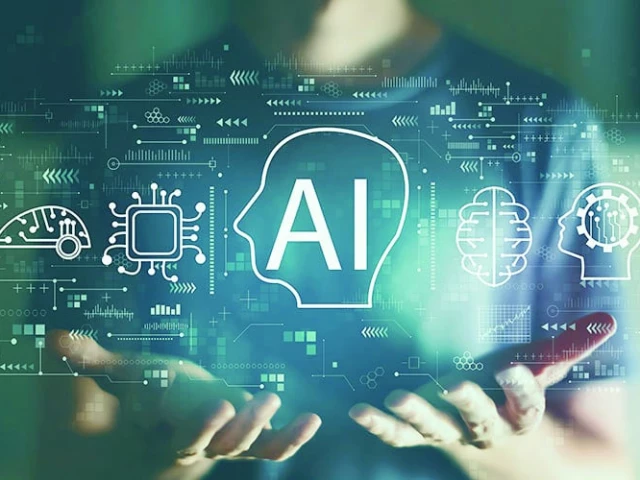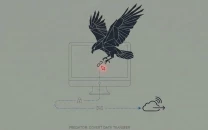The great AI gamble
Technology promises to transform life on Earth, yet faces funding gaps, energy costs and bubble-like speculation

The future of artificial intelligence is being written at breakneck speed — in boardrooms, laboratories, and now, even in space.
From trillion-dollar investments on Earth to Jeff Bezos' vision of orbital data centres, and from Europe's push for AI-driven cars to America's bet on generative algorithms, the technology is not merely evolving — it is redefining the global economy and politics in real time.
Speaking at the Italian Tech Week in Turin, Amazon founder Jeff Bezos painted a picture straight out of science fiction. Within two decades, he predicted, gigawatt-scale data centres will orbit the Earth, fuelled by continuous solar energy, free from clouds, weather, or terrestrial power limitations.
"These giant training clusters will be better built in space," Bezos said, insisting the economics would eventually beat Earth-based centres. The idea builds on a broader theme: using space infrastructure to improve life on Earth, as already seen with satellites.
But he was quick to temper excitement with realism. Space data centres carry daunting risks — rocket failures, high costs, and limited maintenance options.
On artificial intelligence, Bezos urged optimism. Comparing the current boom to the dot-com era, he noted the inevitable "bubble" phases but stressed that the societal impact of AI would be "deep, lasting and everywhere."
That optimism has already translated into a staggering flow of capital. According to Gartner, AI-related spending will top $1.5 trillion this year and exceed $2 trillion in 2026 - nearly 2% of global GDP.
Nvidia, the chipmaker at the centre of the AI hardware race, has pledged $100 billion to support OpenAI's massive data-centre expansion. OpenAI, valued at $500 billion, is now the world's most valuable company, surpassing even Elon Musk's SpaceX. Its Stargate project alone aims to raise $500 billion by 2029 to build Texan data centres the size of Manhattan.
Such astronomical figures raise concerns. Analysts warn of "circular funding" practices, where firms like Nvidia invest in start-ups that immediately spend those funds buying Nvidia's chips. Critics argue this behaviour inflates the market, drawing comparisons to speculative bubbles of the past.
Bain & Company estimates that AI's computing appetite could demand $500 billion in annual data-centre investment through 2030, requiring $2 trillion in yearly revenue to break even. Even under rosy forecasts, the industry faces an $800 billion funding gap.
Yet, believers remain unfazed. "We are in 1996, not 1999," said Dan Ives of Wedbush Securities, comparing today's moment to the early internet boom. Many investments, he conceded, "will go up in smoke," but the technology — like the web before it - will endure.
Europe's AI Drive
While Silicon Valley and China race ahead, Europe is scrambling to stay relevant. In Turin, European Commission President Ursula von der Leyen urged a continental push for AI-powered mobility.
"Self-driving cars are already a reality in the United States and China. The same should be true here in Europe," she declared. Calling for an "AI first" strategy across industries, von der Leyen argued that autonomous vehicles could revive the struggling European automotive sector, reduce congestion, and connect remote regions.
The proposal includes pilot networks across European cities, with 60 Italian mayors already expressing interest. Her call was blunt: "The future of cars — and the cars of the future — must be made in Europe."
But powering AI remains the Achilles' heel. By 2030, the sector's computing footprint could reach 200 gigawatts — roughly the annual electricity consumption of Brazil. Half of this demand is expected in the United States.
The strain is evident. Tech giants are pouring billions into renewable energy projects, and Bezos' dream of orbital data centres is partly driven by AI's insatiable appetite for power. Even then, environmentalists warn that the industry risks trading digital breakthroughs for ecological burdens.
Boom, Bubble or Both?
The clash between boundless optimism and sober caution defines the AI debate. On one side are visionaries like Bezos, who see AI as a civilisational leap comparable to electricity. On the other are analysts tallying deficits and warning of unsustainable economics.
History suggests both camps may be right. The internet boom of the late 1990s spawned countless failed ventures, yet out of the rubble emerged Amazon, Google, and the digital age itself.
Today, as OpenAI serves 700 million users — nearly 9% of humanity — and Europe looks to reclaim its industrial edge, the stakes could not be higher. The question is no longer whether AI will transform the world, but how uneven, costly, and disruptive that transformation will be.
For now, the frenzy continues. Trillions flow, rockets launch, and algorithms grow more powerful by the week. Whether the future lies in terrestrial labs, orbiting data farms, or self-driving cars on European streets, one fact is clear: AI has already left the realm of possibility. It is the defining reality of the 21st century.




















COMMENTS
Comments are moderated and generally will be posted if they are on-topic and not abusive.
For more information, please see our Comments FAQ